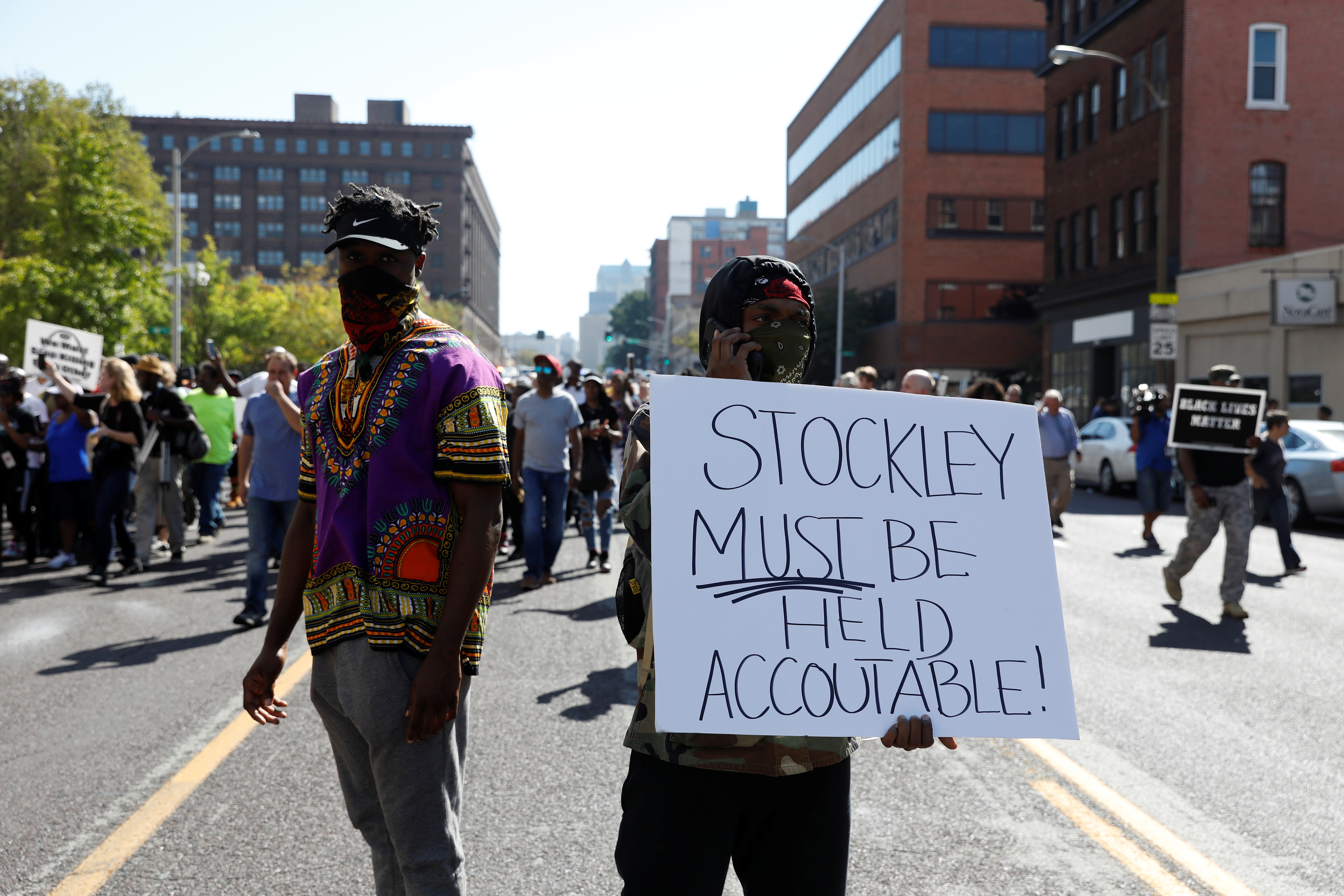
By Valerie Volcovici and Kenny Bahr
ST. LOUIS (Reuters) – Police fired tear gas and rubber bullets during clashes with protesters in St Louis early on Saturday after a white former policeman was acquitted of murdering a black suspect.
A peaceful rally over Friday’s not guilty verdict turned violent after police confronted a small group of demonstrators – three years after the shooting of another black suspect in the nearby suburb of Ferguson stirred nationwide anger and debate.
Officers fired tear gas as people broke windows at a library and two restaurants and threw bricks and water bottles at officers. Protesters also threw rocks and paint at the home of St. Louis Mayor Lyda Krewson, said Acting Police Commissioner Lawrence O’Toole.
Nine city officers and a state trooper were injured and at least 23 people were taken into custody, he said.
Former city policeman Jason Stockley, 36, was found not guilty of the first-degree murder of Anthony Lamar Smith, 24, shot to death on Dec. 20, 2011.
After the ruling, around 600 protesters marched from the courthouse through downtown St. Louis, chanting “No justice, no peace” and “Hey hey! Ho ho! These killer cops have got to go!” Some held “Black Lives Matter” signs.
“I’m sad, I’m hurt, I’m mad,” Reverend Clinton Stancil of the Wayman AME Church in St. Louis said by telephone. “We haven’t made any progress since Ferguson, that’s clear. Cops can still kill us with impunity.”

Men protest outside the St. Louis Metropolitan Police Department after the not guilty verdict in the murder trial of Jason Stockley, a former St. Louis police officer, charged with the 2011 shooting of Anthony Lamar Smith, who was black, in St. Louis, Missouri, U.S., September 15, 2017. REUTERS/Whitney Curtis
“NO PROGRESS SINCE FERGUSON”
Ferguson became the focal point of a national debate on race relations after white officer Darren Wilson shot dead black teenager Michael Brown on Aug. 9, 2014. Protests and clashes broke out after a grand jury cleared the officer, giving rise to the Black Lives Matter movement.
After Friday’s verdict, one group of demonstrators tried to climb onto Interstate 40 but was blocked by police. Another group blocked an intersection by sitting down in the street for six minutes of silence.
After most protesters drifted away, a smaller group of people police described as “agitators” lingered on the streets in an upscale neighborhood near the mayor’s house. The group taunted officers who arrived in riot gear by the busload.
“Reports of bricks thrown at police. That’s not protest. That’s a crime. We stand behind our officers. This violence won’t be tolerated,” Missouri Governor Eric Greitens said on Twitter.
Smith was shot five times in his car after trying to flee Stockley and his partner, following an alleged drug deal, authorities said.
Prosecutors said that during the pursuit, Stockley could be heard saying on an internal police car video he was going to kill Smith.
At Stockley’s direction, his partner, who was driving, slammed the police cruiser into Smith’s vehicle and they came to a stop. Stockley then approached Smith’s car and opened fire with his service weapon, court documents said.
The former policeman believed Smith was armed, defense attorneys said, and a gun was found in the car. But prosecutors argued Stockley planted the weapon and that the gun had only Stockley’s DNA on it.
Stockley’s attorney, Neil Bruntrager, said his client was relieved at the verdict. “It’s been a long road for him,” Bruntrager said.
St. Louis prosecutor Kimberly Gardner called on protesters to avoid violence.
“I understand the verdict has created anger and frustration for many in our community,” she told reporters at the courthouse.
Stockley waived his right to a jury trial, allowing the judge to decide. He left the St. Louis Metropolitan Police Department in 2013 and was arrested last year.
Smith’s family settled a wrongful death lawsuit against the city for $900,000 in 2013, according to Al Watkins, an attorney for Smith’s fiancée, Christina Wilson.
(Additional reporting by Brendan O’Brien in Milwaukee, Suzannah Gonzales in Chicago, Chris Kenning in Louisville, Kentucky and Gina Cherelus in New York; Editing by Simon Cameron-Moore and Andrew Heavens)




















